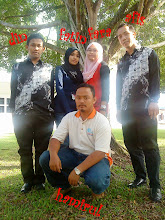1.The processing “speed” of computer refers to the number of binary operations it can perform in one second, so it is really a frequency. If the processor of a one personal computer operates at 1.80 GHz, how much time is required for one processing cycle?
Solution
f =1.80 GHz
f = 1/T
T =1/f
=1/1.80GHZ
=1/(1.80 X 109 ) cycles /s
=5.56 X 10-10
2.humans cab hear range of frequencies from 20 to 20000Hz. To what range of wavelengths in air does this correspond (assume the sound velocity is 340 m/s)?
Solution
λ1 = v/f1 = (340 m/s) / (20/s)
= 17m
λ2 = v/f2 = (340 m/s) / (20000/s)
= 0.017m
3. A string of linear mass density 480 g/m is under a tension of 48 N. a wave of frequency 200Hz and amplitude 4.0 mm travels down the string. At what rate does the wave transport energy?
Solution
ω = 2π f = 2π(200) = 400π s-1 V = √(T/µ ) = √((48 ) N)/(0.48 kg/m = 10 m/s
P = ( ½)µvω2A2 = (0.5)(0.480 kg/m)(10 m/s)(400 πs)2(4 X 10-3m)2= 61 W
4. The G string of the mandolin is 0.34 m long and has a linear mass density of 0.004 kg/m. the thumbscrew attached to the string is adjusted to provide a tension of 71.1 N. what then is the fundamental frequency of the string?
Solution
f1= v/2L = 1/2L√(T/µ) = 1/(2)(0.34m)√((71.1 N)/ ()0.004 kg/m)
=196 Hz
5. a string wave is describe by y = 0.002 sin(0.5x – 628t). determind the amplitude, frequency,period,wavelength,and velocity of the wave.
Solution
A = 0.02m 2π/λ = 0.5 λ =12.6 m
2π/T = 628 T =0.01s f = 1 /T =100 Hz v =f λ =1260 m/s
Subscribe to:
Post Comments (Atom)

No comments:
Post a Comment